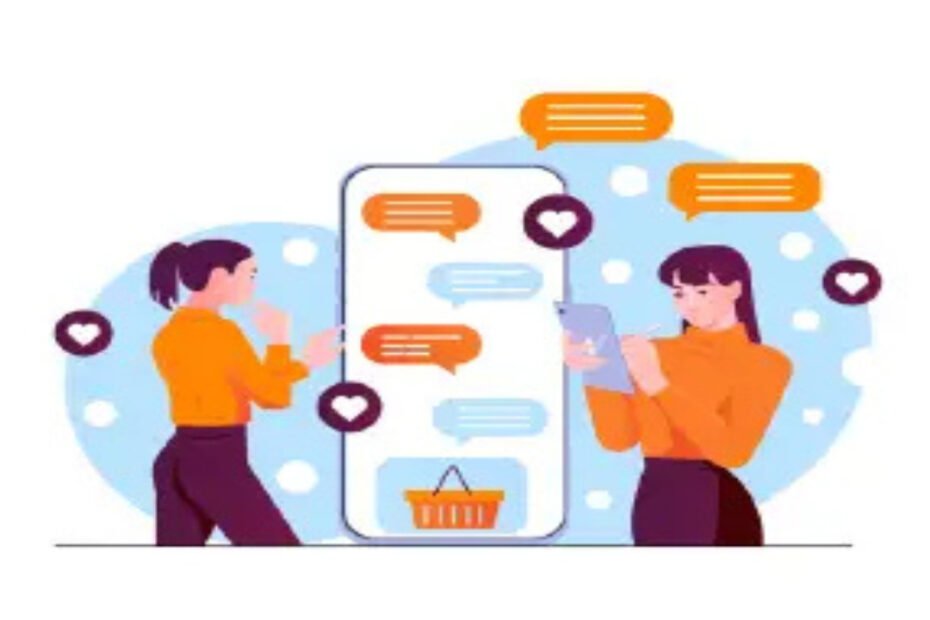In recent years, the way we shop has changed significantly. Today, consumers don’t just want to browse a website: they want to chat, ask questions, and be sure they are making the right choice.
That’s where conversational commerce, or simply C-commerce, comes in.
This trend combines technology and human interaction, allowing sales to happen within a conversation.
Whereas before the focus was on generating traffic to the website, now the secret lies in creating real connections with customers.
A simple “Can I help you?” sent at the right moment can make all the difference between losing and closing a sale.
Throughout this article, you will understand what conversational commerce is, how it works in practice, why it is worth investing in, and how to put together a complete strategy for your store.
What is conversational commerce?
Conversational commerce is the union between conversation and purchase, a way of selling that puts dialogue at the center of the experience.
Instead of relying solely on ads and product pages, the store speaks directly to the customer through messages on channels such as WhatsApp, Instagram, or website chat.
The concept is based on something simple: people trust those who talk to them more. And in the digital environment, this conversation has taken on new forms.
Today, a customer can ask the price of a product, ask questions, and even complete the order without leaving the messaging app.
This new way of selling is not just about technology, but about proximity.
Small and medium-sized retailers, in particular, have a lot to gain from this. They can offer more human, direct, and personalized service without the need for large structures.
It’s like bringing the physical store counter onto the cell phone screen.
How does conversational commerce work?
Conversational Commerce works when the store uses conversation as a direct point of contact with the customer and not just as support.
It all starts with a simple interaction: someone sends a message asking about price, availability, or even requesting a recommendation.
From there, customer service becomes a sales opportunity. Check it out:
- The customer initiates contact on a channel such as WhatsApp, Instagram, or the website chat;
- The store responds quickly, welcoming the customer and understanding what they are looking for;
- During the conversation, the salesperson shares information, images, videos, and personalized suggestions;
- The purchase is finalized within the conversation itself—or a link is sent for direct payment in the online store.
Imagine a cosmetics store that receives a message from someone wondering which type of foundation to buy.
The sales assistant asks the customer about their skin tone, sends two options, explains the difference between them, and completes the order via the WhatsApp link. Simple, fast, and with real customer service.
Why is it important to use c-commerce?
Because people want to talk before buying, and that changes everything.
According to Mobile Time, 99% of Brazilians with smartphones use WhatsApp every day. In other words, the customer is already there, ready to talk to your brand.
For those who sell, this represents a great opportunity to sell more closely, answer questions in real time, and build trust before the purchase.
Instead of relying solely on the website or ads, the salesperson talks directly to the customer and turns customer service into a relationship.
When the conversation flows, the sale happens naturally, and the customer tends to come back.
What are the advantages of using conversational commerce?
Using conversational commerce brings direct benefits to both sellers and buyers.
In simple terms, it speeds up customer service and helps increase sales. Let’s take a closer look at this below:
More convenience for consumers
Customers already spend a good part of their day on messaging apps, so being able to make purchases right there is much more convenient.
They don’t need to open a website, search for the product, or fill out long registration forms. In just a few minutes, they can ask questions, confirm their order, and complete the purchase without leaving the conversation.
This speed makes a difference in a scenario where consumers want to get everything done quickly, using their cell phones.
Automation of customer service
With the use of automated messages and chatbots, retailers can answer frequently asked questions, send order updates, and even direct customers to the right department.
This not only saves time, but also ensures that customers never go without a response.
And when the conversation requires a more human touch, the attendant steps in to maintain the balance between efficiency and personalization.
Increase in conversions
Many sales are lost due to a lack of quick response or closer customer service.
When customers are able to talk to the store and receive direct guidance, they feel more confident about buying.
A common example is someone who has questions about the size or color of a product: with an immediate response, they complete the purchase without thinking twice.
It is this human contact that turns interest into sales.
Reduction in cart abandonment
Most shopping carts are abandoned due to minor concerns, such as delivery times, shipping costs, exchanges, or payment methods.
In conversational commerce, salespeople can take action before customers give up, offering help and resolving issues on the spot.
This rapid interaction can recover sales that would otherwise be lost on the website and leave customers with a positive impression of customer service.
Customization of the customer experience
Every conversation generates valuable information: preferences, buying habits, frequently asked questions.
With this data, you can tailor your service, suggest relevant products, and send messages that really interest the customer.
This personalization makes consumers feel like they are talking to someone who understands what they need. In other words, not a robot.
Increased customer loyalty
When customer service is good and the experience is positive, customers remember it. They return to buy again, recommend the store, and become spontaneous promoters of the brand.
Conversational commerce helps build this bond, showing that behind the screen there is someone willing to help—and that is precisely what makes the difference in the long run.
How to create a conversational commerce strategy?
By now, you have surely realized that adopting conversational commerce is much more than just responding to messages on WhatsApp.
It is about creating a personalized shopping experience that combines technology and human service.
To do this, it is important to build a strategy that is clear, practical, and adapted to your store’s routine.
Below are the steps that will help you turn conversations into results:
1. Set up the chatbot
The chatbot is the starting point for scaling customer service without losing agility.
It can answer simple questions, send order information, or even direct the customer to the right representative.
But here’s the secret: the robot needs to have a human way of speaking.
No cold, overly standardized messages. Opt for short, direct responses using the language your brand already uses on social media.
For example:
Instead of “Your request has been successfully received,” try something like “Hi! How are you? We received your message 😊 We’ll help you right away.”
Small details make customers feel welcome from the first contact.
2. Promote c-commerce
There’s no point in having an amazing customer service channel if no one knows it exists, right?
So make sure your WhatsApp or chat link is visible at all points of contact: social media, online store, emails, and even on product packaging.
You can also create simple posts inviting customers to chat. Something like:
“Have questions about sizing? Call us on WhatsApp!”
This type of invitation shows that your brand is available and accessible, which helps build trust, especially for those who are not yet familiar with your store.
3. Prepare for customer service
Conversational commerce depends on people. Even with automation, human service remains at the heart of the strategy.
That’s why training those who talk to customers is essential: the team needs to know the products, understand the audience’s needs, and know how to communicate with empathy.
It’s worth aligning points such as:
- Brand tone of voice (formal, relaxed, welcoming);
- Ideal response time;
- How to handle common objections and questions.
When customer service is done well, customers feel secure—and this directly influences their purchasing decisions.
4. Define checkout paths
After a good conversation, the customer needs a quick and frictionless way to complete the purchase.
So plan how this closing will happen: whether it will be via a direct payment link, checkout on the website, PIX, or another method.
Ideally, the customer should be able to pay without having to leave the conversation or redo the process on the website.
If the customer ordered a product on WhatsApp, for example, send them a checkout link that is already filled in with the item.
The fewer clicks they need to make, the greater the chances of conversion.
5. Create a strategy for abandoned carts
Customers don’t always buy on the first conversation—and that’s okay. But that doesn’t mean the sale is lost.
A good recovery strategy can reopen the dialogue in a lighthearted way. Short, personalized messages work much better than automatic reminders:
“Hi, I saw that you were looking at that product. Can I help you with any questions?”
This approach shows genuine interest and may be the push needed for the purchase to happen.
6. Monitor your results
Conversational commerce is a living strategy that needs to be observed and adjusted over time.
Track simple metrics such as:
- How many conversations turned into sales;
- Average response time;
- How many people contact you per channel;
- Which messages have the best response rate.
Over time, you will realize which approaches work best and how customer service can become even more efficient.
Creating a conversational commerce strategy is, ultimately, about balancing technology and relationships.
Automate what you can, without losing the human touch. That is the way to turn conversations into consistent sales.
Have you learned about conversational commerce? Now, take it further!
After reading this content, we are sure that you are ready to adopt conversational commerce in your business.
However, it is worth noting that this is just one of the challenges you will face when running a successful business.
You need to understand the world of online sales, from marketing to customer service and logistics.
At Ecommerce na Prática, you will find hundreds of comprehensive courses created by Brazil’s leading e-commerce experts!
More than 150,000 students have already had their lives transformed by e-commerce. Join them:

